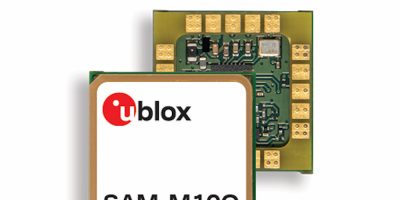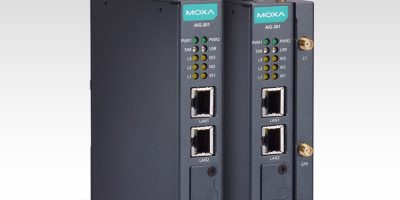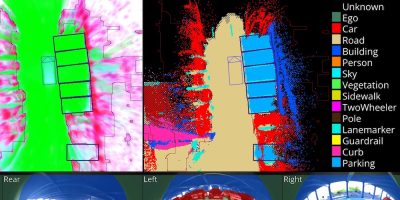Low power global navigation satellite system (GNSS) technology can be integrated into end devices using the SAM-M10Q antenna module, said u-blox.
The antenna module is claimed to have best-in-class low-power positioning. It features an integrated antenna and is intended to integrate u-blox M10 GNSS technology into devices used for industrial tracking and telematics, automation and monitoring or small unmanned aerial vehicles (UAVs), for example.
The low power u-blox M10 GNSS positioning engine in the module offers maximum position availability with concurrent reception of all four GNSS constellations (GPS, GLONASS, Galileo and BeiDou), said u-blox, for higher positioning accuracy and a faster position fix, even in weak signal environments such as urban canyons.
The module’s integrated wide-band antenna, SAW filter and low noise amplifier (LNA) architecture deliver out-of-band jamming immunity. This is particularly helpful for asset tracking and telematic devices located near a cellular modem, advised u-box.
No external components or radio frequency (RF) expertise are required for use with the SAM-M10Q, claimed u-blox. It is pin-to-pin compatible with the company’s previous antenna module (the SAM-M8Q).
The SAM-M10Q is a surface mount device, suitable for automated manufacturing processes. It measures 15.5 x 15.5 x 6.3mm.
Engineering samples of the SAM-M10Q antenna module will be available in August 2022.
u‑blox specialises in positioning and wireless communication in automotive, industrial, and consumer markets. Its services and products let people, vehicles, and machines determine their precise position and communicate wirelessly over cellular and short range networks. The company offers chips, modules, and secure data services and connectivity used by customers to develop innovative and reliable solutions for the IoT.
The company’s headquarters are in Thalwil, Switzerland and u-blox has offices in Europe, Asia, and the USA.







